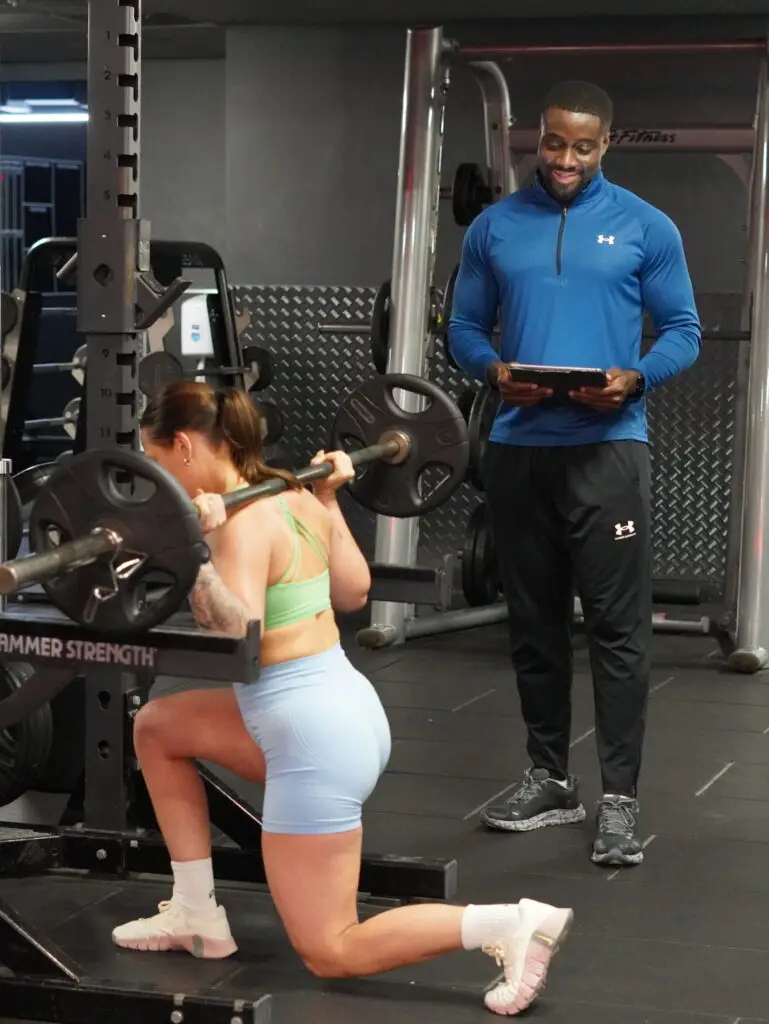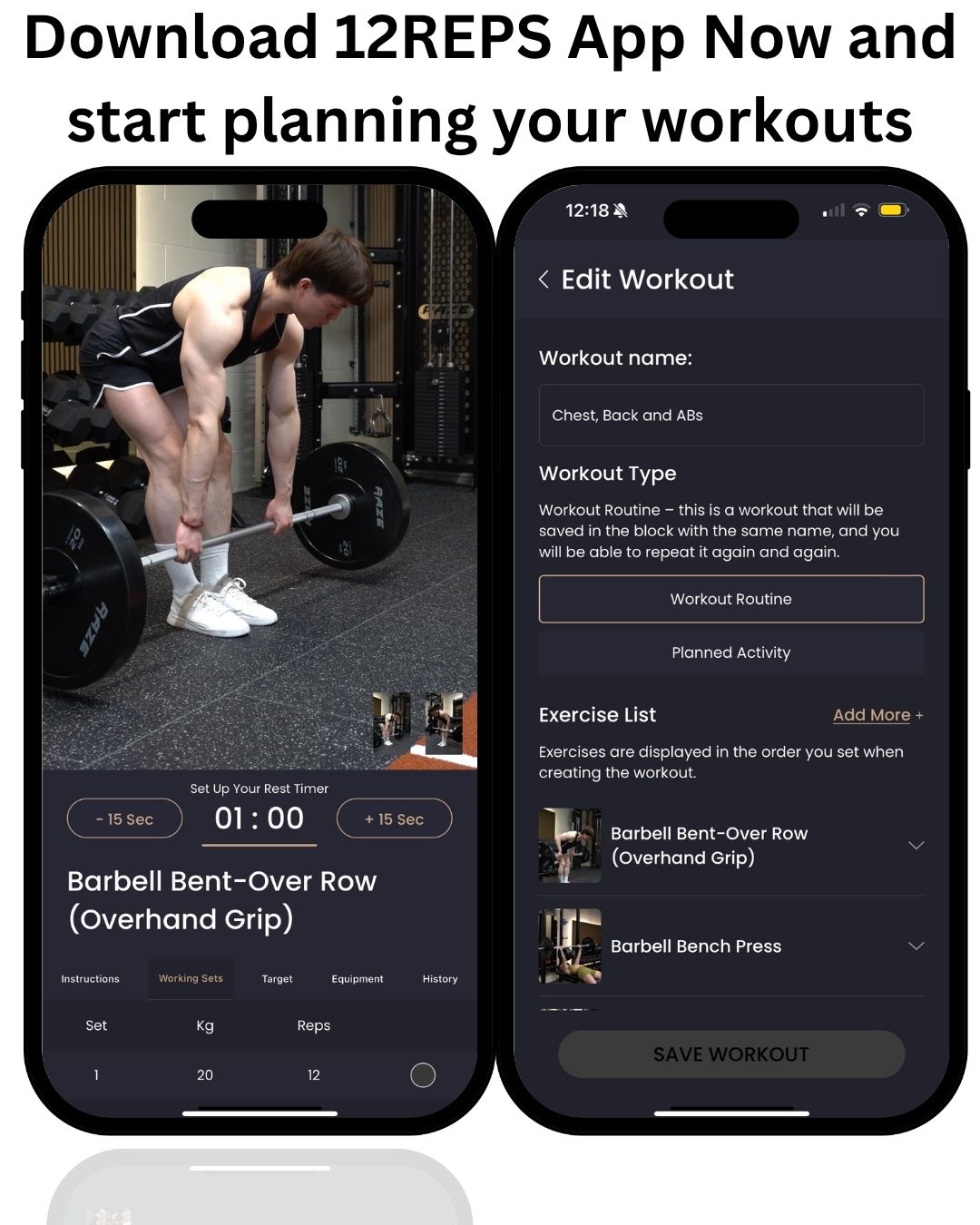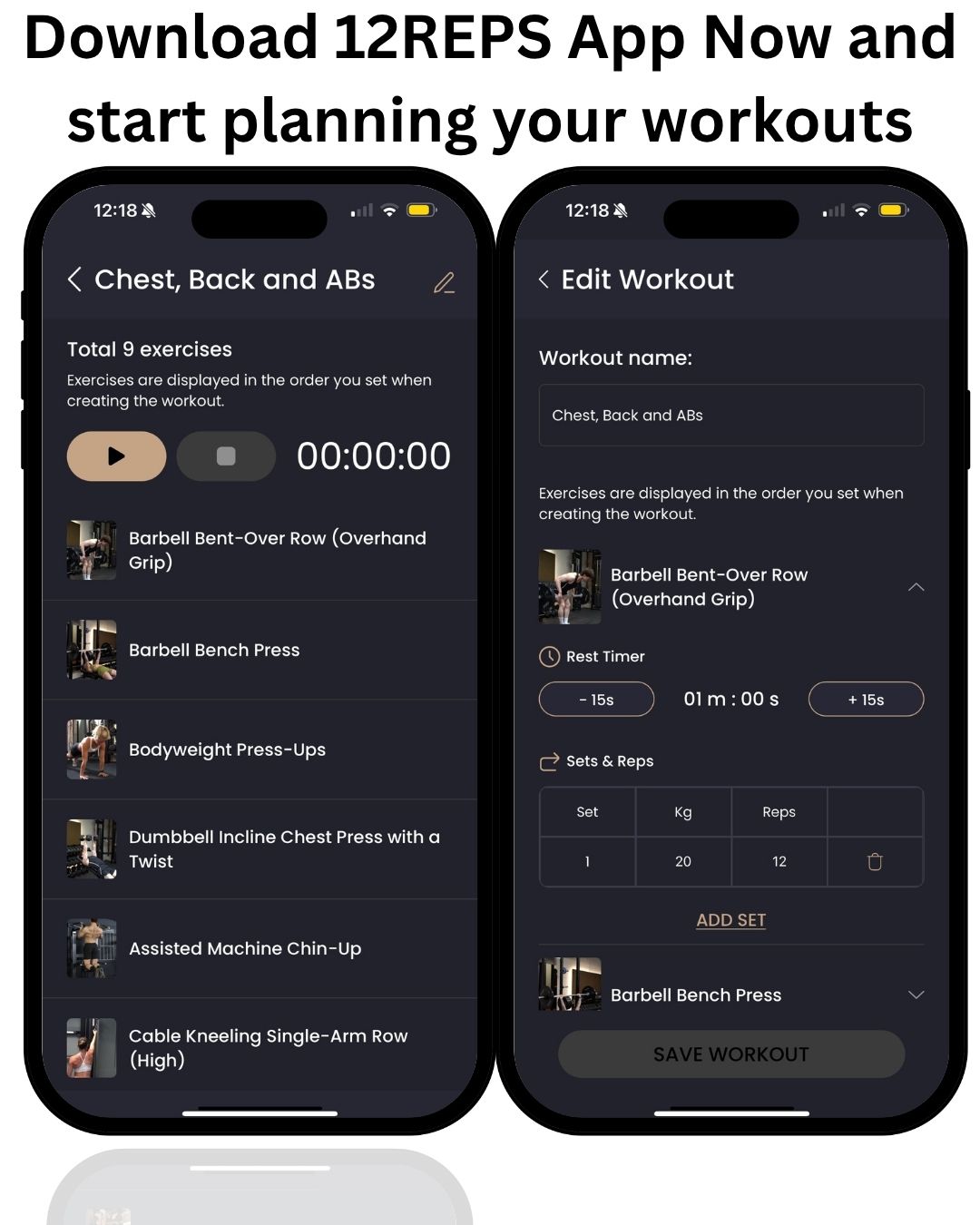Written by Will Duru, BSc (Hons) Sport and Exercise Science, award-winning Personal Trainer with over 10 years of experience in strength training and optimising recovery .
As an award-winning strength and conditioning coach with over 10 years of experience in sport science and athletic strength training, I’ve witnessed countless runners transform their performance through strategic strength training. My name is Will Duru, and throughout my career working with elite athletes, recreational runners, and everyone in between, I’ve developed this intensive 6-week athlete strength training program that delivers measurable results in the shortest possible timeframe.
The science is clear: runners who incorporate systematic strength training into their routine experience improved running economy, enhanced power output, and significantly reduced injury rates [1]. Yet many runners still approach strength training as an afterthought, viewing it as supplementary rather than essential to their performance development. This mindset costs them valuable performance gains and leaves them vulnerable to injury.

This comprehensive 6-week push/pull/legs program represents a fundamental shift in how we approach marathon strength training. Rather than treating strength work as separate from running, this program integrates functional movement patterns that directly translate to improved running performance. Whether you’re preparing for your first 5K, training for a marathon, or seeking to become a more complete athlete, this program provides the foundation for transformation.
The program is specifically designed for runners who want to maximise their potential using free weights and bodyweight exercises only. No fancy equipment or expensive gym membership required, just dedication to the process and commitment to building the strength that underpins all athletic performance. Through two distinct phases, you’ll progress from foundational bodyweight movements to loaded exercises that will transform not just how you run, but how you move through life.
What sets this 6-week program apart is its focus on functional strength exercises that mirror the demands of running whilst addressing the common weaknesses that plague distance athletes. Every exercise has been carefully selected to enhance your running economy, build resilience against injury, and develop the anaerobic power that separates good runners from great ones. The 12reps app and similar tracking tools can help monitor your progress throughout this transformative journey.

Why Strength Training is the Mother of Performance
In the hierarchy of athletic development, strength sits at the foundation of all other physical qualities. This principle, which I call “strength as the mother of performance,” forms the cornerstone of effective weightlifting programs for runners. For distance athletes, this concept is particularly crucial because the demands of running require not just cardiovascular fitness, but the structural integrity and neuromuscular efficiency that only comes from systematic strength development.
The science behind this principle is compelling. When we examine running biomechanics, each foot strike generates forces equivalent to 2.5-3 times body weight [2]. Over the course of a marathon, this translates to thousands of repetitions under significant load. Without adequate strength to absorb and redirect these forces efficiently, runners experience energy leaks, compensatory movement patterns, and ultimately, performance plateaus or injuries.
Muscle building for runners addresses these challenges through multiple mechanisms. Firstly, strength training improves running economy, the oxygen cost of running at a given pace, by enhancing neuromuscular coordination and reducing the energy cost of each stride [3]. Studies consistently show that runners who incorporate strength training can improve their running economy by 2-8% within just 4-6 weeks, which translates to significant performance gains over distance.
The neuromuscular adaptations from strength training are particularly relevant for distance runners. Traditional endurance training primarily develops slow-twitch muscle fibres, but running performance, especially in competitive situations, requires the ability to recruit fast-twitch fibres for surges, hill climbs, and finishing kicks. Athletic strength training through resistance training enhances the recruitment and coordination of these fast-twitch fibres, providing the power reserve that separates competitive athletes from recreational runners.
Beyond performance enhancement, strength training serves as the primary injury prevention strategy for runners. The repetitive nature of running creates predictable patterns of weakness and imbalance, particularly in the hips, glutes, and core musculature. A well-designed athlete weightlifting program addresses these vulnerabilities by strengthening the kinetic chain and improving movement quality. Research indicates that runners who engage in regular strength training experience injury rates 50% lower than those who rely solely on running for fitness [4].
The metabolic benefits of strength training for runners extend beyond the training session itself. Increased muscle mass elevates resting metabolic rate and improves body composition, making this program particularly effective for weight loss. This is especially beneficial for runners seeking to optimise their power-to-weight ratio, as increased muscle mass creates a more efficient fat-burning engine even during easy runs and recovery periods.
Perhaps most importantly, strength training develops the anaerobic power systems that complement aerobic development. While running primarily taxes the aerobic energy system, competitive performance often depends on anaerobic contributions during surges, climbs, and sprint finishes. This anaerobic capacity becomes even more critical in modern competitive running, where tactical races and varied terrain demand well-rounded athletic development.

Energy Systems and Body Composition Transformation
Understanding how this 6-week program targets different energy systems is crucial for maximising results. The human body operates through three distinct energy systems: the phosphocreatine system (immediate energy for 0-10 seconds), the glycolytic system (anaerobic energy for 10 seconds to 2 minutes), and the oxidative system (aerobic energy for sustained efforts). While traditional running training primarily develops the oxidative system, this program strategically targets all three to create well-rounded athletic development.
The anaerobic energy systems are often the limiting factor in competitive running performance. The ability to respond to surges, maintain pace on hills, and deliver powerful finishing kicks depends on well-developed anaerobic capacity. The rep ranges and rest periods in this program, 12-15 repetitions with 45-second rest, specifically target the glycolytic system, developing the strength-endurance qualities that enhance running performance [5].
This training approach develops what exercise physiologists term “strength endurance” the ability to maintain force production under fatigue. This quality directly translates to maintaining running form and power output during the latter stages of races, when many competitors begin to fade. The circuit-style nature of the workouts, combined with short rest periods, creates a training stimulus that closely mirrors the metabolic demands of competitive running.
Muscle building for runners through this program occurs through multiple mechanisms that complement rather than hinder endurance performance. The initial bodyweight phase develops neuromuscular coordination and movement quality without significant increases in muscle mass. As the program progresses to loaded exercises, targeted muscle development occurs in areas that directly support running performance: the glutes, core, and posterior chain.
The body composition changes achievable in six weeks are remarkable when strength training is implemented correctly. Weight loss occurs through multiple pathways: increased muscle mass elevates resting metabolic rate, resistance training creates an extended post-exercise oxygen consumption effect, and improved muscle function enhances fat oxidation during aerobic exercise [6]. Runners often experience simultaneous fat loss and muscle gain, resulting in improved power-to-weight ratios.
The metabolic flexibility developed through this program extends beyond simple body composition changes. Runners who engage in regular strength training develop enhanced fat oxidation capacity, allowing them to spare glycogen stores during longer efforts. This adaptation is particularly valuable for marathon and ultra-distance events where fuel management determines performance outcomes.
Marathon strength training for women deserves special consideration, as female athletes often experience greater relative strength gains and more favourable body composition changes from resistance training compared to males [7]. The moderate loading and higher rep ranges used in this program provide an optimal stimulus for these adaptations whilst maintaining the movement efficiency essential for distance running.
The hormonal responses to strength training favour positive body composition changes in ways that complement endurance training. Resistance exercise stimulates growth hormone and testosterone release, both of which promote muscle protein synthesis and fat oxidation. These hormonal adaptations are particularly pronounced in the first 6-8 weeks of training, making this timeframe optimal for body composition improvements.
The integration of strength training with running creates synergistic effects on body composition that neither modality achieves alone. The combination of aerobic and anaerobic training stimuli maximises both fat oxidation and muscle protein synthesis, creating the lean, powerful physique that characterises elite endurance athletes. These changes become apparent within 3-4 weeks of consistent training, providing motivation to continue the program.

The 6-Week Program Overview
This intensive athlete strength training program is built around the proven push/pull/legs split, condensed into a highly effective 6-week format that delivers rapid results. The program divides training into three workout types: push movements targeting chest, shoulders, and triceps; pull movements focusing on back, biceps, and rear delts; and leg movements developing the entire lower body. This division ensures balanced development whilst allowing optimal recovery between sessions.
The 6-week timeframe is divided into two distinct phases, each serving specific objectives in your athletic development. Phase 1 (weeks 1-3) establishes movement foundations through bodyweight exercises and mobility work, ensuring proper mechanics before progressing to loaded movements. Phase 2 (weeks 4-6) introduces free weights and progressive overload, building the strength qualities that directly enhance running performance.
Equipment requirements remain minimal to ensure accessibility and consistency. You’ll need access to dumbbells or adjustable weights, a pull-up bar or resistance bands, and space for bodyweight exercises. This setup can be achieved in most home environments or basic gym facilities, eliminating barriers to consistent training.
The training frequency of three sessions per week provides the optimal balance between stimulus and recovery for rapid adaptation. This frequency allows for integration with running training without compromising either discipline. Sessions are strategically spaced to allow 48-72 hours recovery between training the same muscle groups, ensuring optimal adaptation whilst preventing overuse injuries.
Complete 6-Week Workout Program
Weekly Schedule:
– Monday: Push Day
– Tuesday: Easy run
– Wednesday: Pull Day
– Thursday: Easy run
– Friday: Legs Day
– Saturday: Long run
– Sunday: Rest

PHASE 1: FOUNDATION (WEEKS 1-3)
PUSH DAY – PHASE 1
Exercise | Warm-up Set | Working Sets | Reps | Rest | Week 1-3 Progression |
Push-ups | 1 x 8 easy | 3 x 12-15 | 12-15 | 45s | Week 1: knee push-ups, Week 2: full push-ups, Week 3: feet elevated |
Pike Push-ups | 1 x 6 easy | 3 x 8-12 | 8-12 | 45s | Focus on shoulder strength, increase range each week |
Tricep Dips (chair) | 1 x 8 easy | 4 x 10-15 | 10-15 | 45s | Week 3: elevate feet on second chair |
Plank to shoulder touches | 1 x 5 easy | 3 x 8-12 | 8-12 | 45s | Build core stability and push strength |
Crab walk | 1 x 10s | 4 x 15-30s | 15-30s | 45s | Increase hold time weekly |
PULL DAY – PHASE 1
Exercise | Warm-up Set | Working Sets | Reps | Rest | Week 1-3 Progression |
Inverted Rows (table) | 1 x 8 easy | 4 x 10-15 | 10-15 | 45s | Adjust body angle – more upright to horizontal |
Pull-ups/Chin-ups / assisted chin ups with a band | 1 x 5 assisted | 4 x 5-12 | 5-12 | 45s | Use resistance band or chair assist, reduce assistance weekly |
Superman | 1 x 10 easy | 4 x 12-15 | 12-15 | 45s | Focus on glute and lower back activation |
Reverse Fly (lying) | 1 x 10 easy | 4 x 12-15 | 12-15 | 45s | Squeeze shoulder blades together |
Dead Hang | 1 x 10s | 4 x 20-45s | 20-45s | 45s | Build grip strength, increase time weekly |
LEGS DAY – PHASE 1
Exercise | Warm-up Set | Working Sets | Reps | Rest | Week 1-3 Progression |
Bodyweight Squats | 1 x 10 easy | 4 x 15-20 | 15-20 | 45s | Focus on depth and control, add pause in week 3 |
Single-leg Glute Bridges | 1 x 8 each | 4 x 12-15 each | 12-15 | 45s | Week 1: double leg, Week 2-3: single leg |
Alternating Lunges | 1 x 6 each | 4 x 12-15 each | 12-15 | 45s | Week 3: add jump lunges |
Calf Raises | 1 x 12 easy | 4 x 15-20 | 15-20 | 45s | Week 2-3: single leg progression |
Wall Sit | 1 x 20s | 4 x 30-60s | 30-60s | 45s | Increase time by 10s each week |
PHASE 2: STRENGTH DEVELOPMENT (WEEKS 4-6)
PUSH DAY – PHASE 2
Exercise | Warm-up Set | Working Sets | Reps | Rest | Week 4-6 Progression |
Dumbbell Chest Press | 1 x 10 light | 4 x 12-15 | 12-15 | 45s | Increase weight 2-5lbs weekly |
Dumbbell Overhead Press | 1 x 8 light | 4 x 10-12 | 10-12 | 45s | Focus on core stability, increase weight |
Dumbbell Flyes | 1 x 10 light | 4 x 12-15 | 12-15 | 45s | Control eccentric, light weight |
Diamond Push-ups/push-ups | 1 x 8 | 4 x 10-15 | 10-15 | 45s | Tricep focus, add weight vest if available |
Lateral Raises | 1 x 10 light | 4 x 12-15 | 12-15 | 45s | Light weight, perfect form |
PULL DAY – PHASE 2
Exercise | Warm-up Set | Working Sets | Reps | Rest | Week 4-6 Progression |
Bent-over Dumbbell Rows | 1 x 10 light | 4 x 12-15 | 12-15 | 45s | Keep core tight, increase weight |
kettlebell Single-arm Rows | 1 x 8 each light | 4 x 12-15 each | 12-15 | 45s | Focus on lat engagement |
Dumbbell Reverse Flyes | 1 x 10 light | 4 x 12-15 | 12-15 | 45s | Rear delt focus, light weight |
Dumbbell Hammer Curls | 1 x 10 light | 4 x 12-15 | 12-15 | 45s | Grip strength, controlled movement |
Rope or band Face Pulls (band) | 1 x 10 | 4 x 15-20 | 15-20 | 45s | External rotation, posture |
LEGS DAY – PHASE 2
Exercise | Warm-up Set | Working Sets | Reps | Rest | Week 4-6 Progression |
Dumbbell or Kettlebell Goblet Squats | 1 x 10 light | 4 x 12-15 | 12-15 | 45s | Hold dumbbell at chest, increase weight |
Barbell Romanian Deadlifts | 1 x 8 light | 4 x 10-12 | 10-12 | 45s | Hip hinge focus, increase weight |
Dumbbell Alternating Lunges | 1 x 6 each light | 4 x 12-15 each | 12-15 | 45s | Add weight progressively |
Single-leg Calf Raises | 1 x 10 each | 4 x 12-15 each | 12-15 | 45s | Hold dumbbell for resistance |
Farmer’s Walks | 1 x 20m light | 4 x 30-40m | 30-40m | 45s | Core and grip strength, increase weight |
Implementation and Integration with Running Training
Successfully implementing this 6-week marathon strength training program requires strategic integration with your running schedule and careful attention to recovery protocols. The intensive nature of the program demands respect for the adaptation process whilst maintaining consistency in execution. Proper implementation can transform your running performance in just six weeks, but success depends on following the program systematically.
The optimal scheduling places strength sessions on easy running days or as part of double sessions with easy runs. This approach preserves energy for key running workouts whilst ensuring high-quality strength training. Leg sessions require particular attention to timing, ideally scheduled 48 hours before hard running sessions to allow adequate recovery. The program’s three-session-per-week frequency provides flexibility for integration with various running schedules.
Recovery protocols become crucial during this intensive 6-week period. Active recovery strategies such as light movement, stretching, and foam rolling should be incorporated daily. Sleep quality and duration directly impact adaptation to strength training, with 7-9 hours of quality sleep being essential for optimal results. Nutrition timing around strength sessions should emphasise protein intake within 2 hours post-exercise to support muscle protein synthesis.
The progression model emphasises movement quality first, then volume, and finally intensity. This conservative approach ensures that adaptations occur safely and sustainably, reducing injury risk whilst maximising long-term development. The rapid progression possible in six weeks requires careful attention to recovery and load management to prevent overreaching.

Expected Results and Performance Improvements
The expected results from this 6-week program are both measurable and noticeable. Runners typically experience 10-15% improvements in strength measures, 3-5% improvements in running economy, and noticeable changes in body composition within the first 3-4 weeks [8]. These adaptations compound throughout the program, creating significant performance improvements by week 6.
Subjective improvements often precede measurable changes, with runners reporting increased confidence, better movement quality, and improved ability to handle challenging training sessions within the first two weeks. These psychological adaptations prove as valuable as the physical changes, creating a more resilient and capable athlete.
The strength gains achieved in six weeks provide the foundation for continued development. Runners who complete this program successfully can progress to more advanced training methods or repeat the program with heavier loads. The movement patterns and training habits established during these six weeks create the platform for long-term athletic development.
Weight loss and body composition improvements become apparent within 3-4 weeks of consistent training. The combination of increased muscle mass, elevated metabolic rate, and improved fat oxidation creates favourable changes in body composition that enhance both performance and appearance. These changes are particularly pronounced when the program is combined with appropriate nutritional strategies.
The anaerobic capacity developed through this program directly translates to improved race performance. Runners report better ability to respond to surges, maintain pace on hills, and deliver powerful finishing kicks. These improvements become particularly apparent in races shorter than the marathon, where anaerobic contributions play a larger role in determining performance.
Progression Beyond Six Weeks
Upon completion of this 6-week program, runners have several options for continued development. The program can be repeated with heavier loads and more challenging exercise variations. Alternatively, runners can progress to more advanced training methods that build upon the foundations established during these six weeks.
The movement patterns and strength qualities developed through this program create the platform for sport-specific training methods. Plyometric exercises, Olympic lift variations, and advanced unilateral movements become accessible once the foundational strength and movement quality have been established.
Athletic strength training becomes a lifelong pursuit for serious runners. The principles and progressions outlined in this program can be adapted and modified throughout your athletic career, ensuring continued development and injury prevention. The key is maintaining consistency and respecting the adaptation process.

Conclusion
This 6-week push/pull/legs program represents a concentrated approach to athlete strength training program development that delivers rapid, measurable results for runners at all levels. Through systematic progression from bodyweight foundations to loaded exercises, the program builds the strength qualities that enhance running performance whilst reducing injury risk.
The integration of multiple energy systems, functional movement patterns, and progressive overload creates adaptations that extend far beyond simple strength gains. Runners who complete this program will experience improved running economy, enhanced anaerobic capacity, better body composition, and the confidence that comes from feeling truly strong and powerful.
Whether you’re preparing for a specific race, breaking through a performance plateau, or simply seeking to become a more complete athlete, this program provides the foundation for transformation. The principles and progressions outlined here represent years of experience working with athletes at all levels, distilled into a format that delivers maximum results in minimum time.
As an experienced strength and conditioning coach and sport scientist, I’ve witnessed the transformative power of focused, systematic strength training. This 6-week program represents the culmination of years of research and practical application, designed specifically for the unique needs of distance runners.
The strength you build in these six weeks will serve you not just in races, but in every aspect of your athletic journey. This program isn’t just about becoming a better runner—it’s about becoming a more resilient, capable, and confident athlete who can handle whatever challenges lie ahead. Trust the process, maintain consistency, and prepare to discover new levels of performance.

References
[1] Blagrove, R. C., Howatson, G., & Hayes, P. R. (2018). Effects of strength training on the physiological determinants of middle-and long-distance running performance: a systematic review. Sports Medicine, 48(5), 1117-1149. https://link.springer.com/article/10.1007/s40279-017-0835-7
[2] Cavanagh, P. R., & Lafortune, M. A. (1980). Ground reaction forces in distance running. Journal of Biomechanics, 13(5), 397-406.
[3] Yamamoto, L. M., Lopez, R. M., Klau, J. F., Casa, D. J., Kraemer, W. J., & Maresh, C. M. (2008). The effects of resistance training on endurance distance running performance among highly trained runners: a systematic review. Journal of Strength and Conditioning Research, 22(6), 2036-2044. https://journals.lww.com/nsca-jscr/fulltext/2008/11000/the_effects_of_resistance_training_on_endurance.43.aspx
[4] Lauersen, J. B., Bertelsen, D. M., & Andersen, L. B. (2014). The effectiveness of exercise interventions to prevent sports injuries: a systematic review and meta-analysis of randomised controlled trials. British Journal of Sports Medicine, 48(11), 871-877.
[5] Jung, A. P. (2003). The impact of resistance training on distance running performance. Sports Medicine, 33(7), 539-552. https://link.springer.com/article/10.2165/00007256-200333070-00005
[6] Westcott, W. L. (2012). Resistance training is medicine: effects of strength training on health. Current Sports Medicine Reports, 11(4), 209-216.
[7] Roelofs, E. J., Smith-Ryan, A. E., Melvin, M. N., Wingfield, H. L., Trexler, E. T., & Walker, N. (2015). Muscle size, quality, and body composition: characteristics of division I cross-country runners. Journal of Strength and Conditioning Research, 29(2), 290-296. https://journals.lww.com/nsca-jscr/FullText/2015/02000/Muscle_Size,_Quality,_and_Body_Composition_.2.aspx
[8] Mikkola, J. S., Rusko, H. K., Nummela, A. T., Pollari, T., & Häkkinen, K. (2007). Concurrent endurance and explosive type strength training increases activation and fast force production of leg extensor muscles in endurance athletes. Journal of Strength and Conditioning Research, 21(2), 613-620. https://journals.lww.com/nsca-jscr/abstract/2007/05000/concurrent_endurance_and_explosive_type_strength.56.aspx










